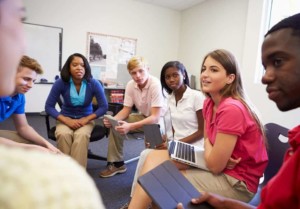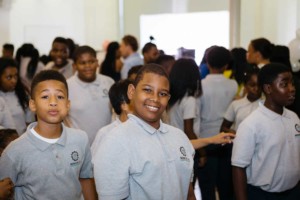Building a Learner Variability Mindset

By: Tiffany Wycoff
In a classroom, innumerable variables exist. It is arguably one of the most dynamic work environments to manage. Variability is the only given on any day in a school. And yet, we persist in treating learner variability as the exception rather than the norm in instructional planning.
This is because we designed the system of education based on the standardized factory model of learning. In most lesson plans, differentiation is a footnote to the one shared learning objective. In his 2010 TED talk, Sir Ken Robinson urges a shift from this factory model. “We have to go from what is essentially … a manufacturing model, which is based on linearity and conformity and batching people. We have to recognize that human flourishing is not a mechanical process; it’s an organic process.”
As a result of this factory model system of education, teachers have been born into their careers with a learner exception mindset rather than a variability mindset. Some effectively shift to a variability mindset through a crash course courtesy of their highly variable learners. Accounting for learner variability becomes a minute-by-minute reflection and adjustment cycle. However, other teachers struggle amidst the pervasive standardization of education and continue to plan for whole-group instruction while doing their best to meet the needs of outlier learners. To transform learning and meet the needs of all students, we must shift our learner exception mentality to a learner variability mindset.
What is a Learner Variability Mindset?
There is an equation for teaching. At all times within a classroom environment this equation involves at least three components: the learner, the curriculum, and the instruction. The teacher is responsible for solving this equation so that each learner experiences instruction that enables them to master the curriculum. The problem is most teachers are expected to teach within an equation that completely discounts one of the components, the learner: Curriculum/Timeline = Instructional Units. In this equation, the focus is on coverage, and there is no room for learner variability.
To build a learner variability mindset, we must implement a new equation. In this equation, we start with the learner and their needs, then factor in the learning target. With this mindset, the instructional toolkit becomes a collection of strategies the teacher accesses to meet the learning needs of all students. In essence, it empowers the teacher to become what Dr. Arnetha Ball calls a “pedagogical problem solver.”
Beyond Ability Grouping
Ability grouping based on skill level is almost universally the go-to differentiation strategy. While there is a place for flexible grouping based on skill readiness, we need to look beyond this dominant practice. A learner’s skill readiness is a product of other variables we fail to consider if we only look at this one metric. Further, if we persist in grouping by readiness, we can proliferate fixed mindset in learners and fall short in creating dynamic, enriching peer-to-peer learning experiences.
There are four areas beyond skill readiness where a pervasive, often unconscious, learner exception mindset obstructs even the best-intentioned teachers. As outlined in Dr. Ball’s Model of Generative Change, we can shift practice by increasing metacognitive awareness and exploring new strategies through action research. We’ve outlined some questions and in-action research strategies to foster a learner variability mindset.

For those who are learning with LINCspring, these cycles can help you build a learner variability mindset: Empowering Students with Shared Visioning, Agency through Student Choice Playlist, Design Thinking for PBL, Connectivity in Learning, and Design Thinking for PBL.
For more, see:
- Solution Design: Mindsets, Practices and Systems
- Cultivating An Innovation Mindset in the Classroom
- Mindset, and the Power of “Yet”
Stay in-the-know with innovations in learning by signing up for the weekly Smart Update.
Tiffany Wycoff is co-author of Blended Learning in Action, and Chief Innovation Officer and Co-Founder of LINC. Connect with Tiffany on Twitter @TeachOnTheEdge and @LINC_PD.











Ivette Pichardo
I like that i am already using most of these grouping strategies and that they are the ones that are highlighted in this training.